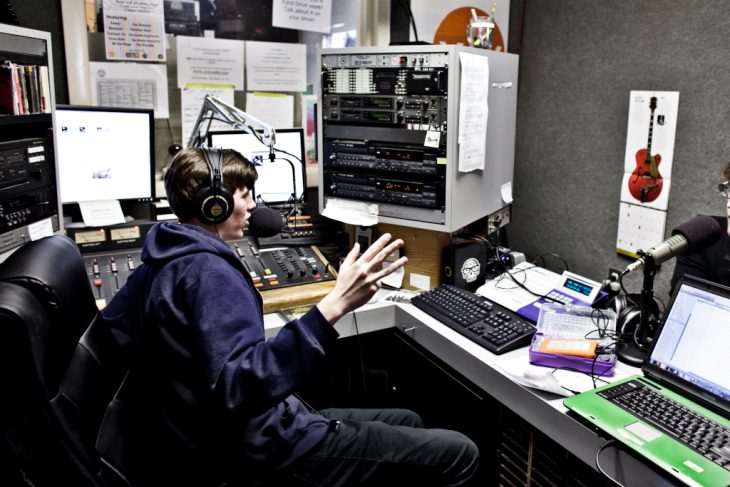
Radio broadcasters outraged at CRTC’s support for airplay quotas
By Howard Law, author of MediaPolicy.ca and Canada vs California: How Ottawa took on Netflix and the streaming giants (2024)
This week, the Canadian Association of Broadcasters let howl a primal scream of protest against the CRTC’s recent notice of consultation on radio broadcasting and audio streaming. In an open letter the CAB says the commission’s notice, full of “preliminary views” on key regulatory points, “absolutely missed the mark” and is so bad it should be rescinded and the CRTC should go back to the drawing board.
The CAB voiced a similar if toned-down protest in December 2022 when the commission issued its review of commercial radio. But that was more than two years ago in a declining radio industry. At the time, the commission promised to look at radio with fresh eyes once the Online Streaming Act was enacted.
The radio broadcasters want two things: relief from Canadian airplay quotas for Canadian popular music (in 2022 they pitched a reduction of English-language quotas from 35 per cent to 25 per cent), and they want serious responsibilities imposed on foreign audio streamers for the discovery of Canadian music.
The commission’s notice appears to give them neither. Cue the howling.
The notice opines definitively that quotas don’t work in a music streaming environment, apparently foreclosing even a discussion of applying quotas to the streamers’ radio-style channels and curated playlists.
On the other hand, the commission invites submissions on what “promotion and exposure” that YouTube, Spotify, Amazon and Apple might give to Canadian music. But so far there are no explicit commission expectations of better outcomes for Canadian music despite its acknowledgement of remarkably low consumption on streaming services.
More pressing for radio operators, the commission gives its “preliminary view” that it won’t be adjusting airplay quotas. The commission devotes a single paragraph to its endorsement of the status quo (it was discussed at greater length in the 2022 radio ruling). The radio broadcasters might be forgiven for regarding those two sentences as a dismissive prejudgment of their number one issue.
In fact, the broadcasters are accusing the commission of making airplay quotas even more onerous. The commission is disappointed radio operators didn’t take it more seriously in 2022 when asked for more airplay of emerging artists and indigenous music. Now the commission is “of the preliminary view” it should make that airplay mandatory as a subset of existing quotas. The radio broadcasters just see the time-consuming burden of compliance.
Then there’s the cash. Non-exempt radio broadcasters have historically paid 0.5 per cent of their revenues into the music development pot administered by FACTOR and the other Canadian music funds. In one paragraph of the consultation notice, the CRTC moots the reduction of those cash contributions (presumably to zero).
But then the commission re-opens the issue in a later paragraph by asking how to make the overall regulatory responsibilities equitable as between radio and streamers, the latter slated by the commission to pay five per cent of revenues to Canadian music funds.
As there are only two major inputs into “equitable” industry contributions to Canadian music — cash or the discoverability of Canadian music — it seems logical that the commission is thinking about streamers contributing more in cash than the prominence of Canadian music while the radio broadcasters do the opposite.
But the Canadian broadcasters’ policy logic is that if radio is going to do all or most of the heavy lifting on making Canadian music known to Canadians in a market increasingly dominated by foreign streamers who do very little on that score, it needs regulatory relief on quotas to do so.
What’s noticeable in the CAB protest is that it didn’t waste its breath carping about the definition of Canadian music for the purpose of fulfilling those heavy airplay quotas. That’s the oft-debated MAPL formula that looks for two out of four Canadian music professionals in the categories of songwriting (split between music and lyrics), performing artists, and the location of recording.
The commission has now affirmed the provisional ruling it made in 2022: it will eliminate “location of recording” and allow non-Canadian songwriters to share up to 50 per cent credit in music or lyrics. That should satisfy the reasonable criticism of MAPL: the commission will now recognize a song as Canadian if it’s written entirely by Canadians, or if it’s performed by Canadians and either the music or lyrics is written or co-written by a Canadian. But Canadian pop stars covering American songs won’t count towards airplay quotas.
That leaves reduction of airplay quotas as the broadcasters’ big ask of the commission. Assuming the radio operators can even convince the commission to reconsider its “preliminary view” to leave them untouched, the commission (or the radio broadcasters) would need to model how reducing quotas would appreciably impact audience loyalty and advertising revenue.
It seems an intuitive proposition in theory, but any game-changing adjustment to quotas would at the very least have to meet the practical test of being effective in sustaining radio audiences and revenues, since this is the policy logic of the request for regulatory relief.
Photo via Wikimedia
HIGH QUALITY JOURNALISM REQUIRES AN INVESTMENT.
Cartt.ca publishes breaking news, in-depth feature stories, analysis, and opinion geared specifically for those working in the cable, radio, television, and telecom industries in Canada.
Breaking news, top-notch analysis and commentary is posted as it happens while twice-weekly newsletters compile those stories and deliver them directly to more than 4,000 industry subscribers. Cartt.ca offers credible journalism for the industry professional.




